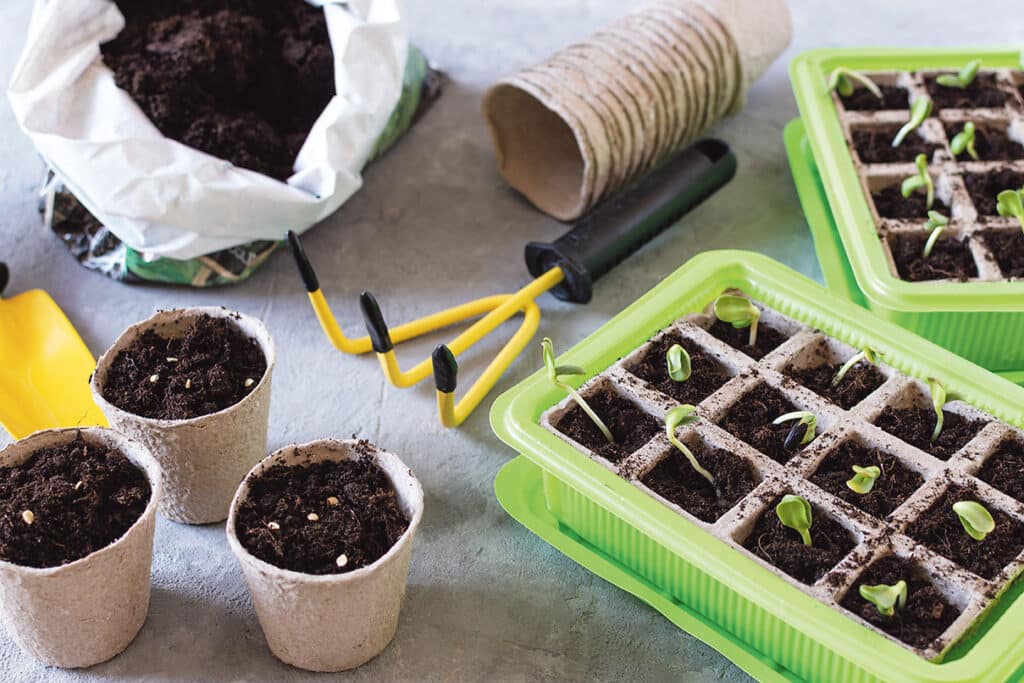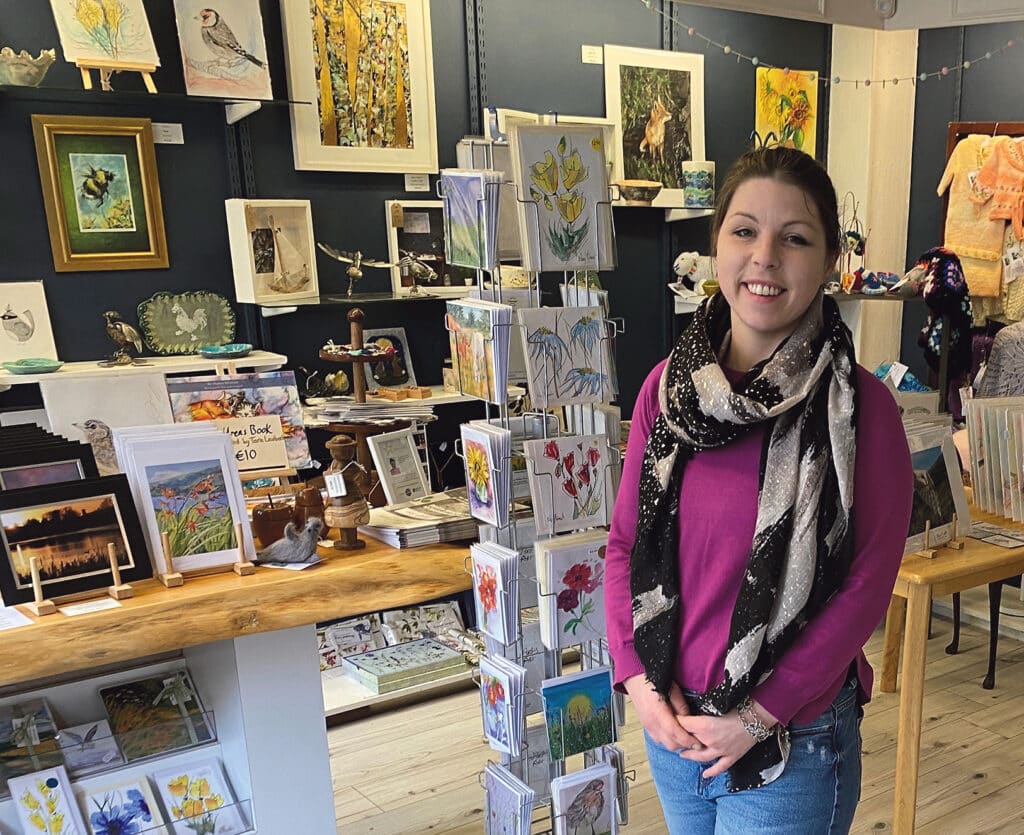Over the last few years there has been a huge increase in people interested in growing their own food visiting us here at Deelish and, with the weather warming up, now is a perfect time to start. Not only has the number of growers increased but the average age of the gardener has gone down by many years! We regularly help teachers in preschools and primary schools to get started with their own growing. The lovely thing is that you can produce food with very little space. Whether you are planning to grow from a window ledge, raised bed, Geodome or commercial polytunnel, there are a few practical points to consider before you get started.

Plan to plant in an area that gets full sun, at least six hours a day (eight to 10 hours is even better). Since all gardens require frequent watering, make sure you have a source of good quality water and a hose that will reach all corners of your garden. If well water or mains is not available, you may consider setting up a rainwater collection system. Once you have decided where you want to grow, you need to decide if you are going to use containers (for a small garden or patio space), raised beds (that can be constructed from a variety of materials) or grow directly in the ground.
For a healthy vegetable garden, you need to start with healthy soil. The most important component in soil is the organic matter such as manure, peat moss, or homemade compost. Compost is the best option because it contains decayed plant matter and microorganisms. These microorganisms form a symbiotic partnership with the plants you want to grow and supply your plants with the nutrients they need. If you plan to create your own compost-making area, locate it near your growing area to minimise the distance you have to move materials. If you are unable to get freshly-made compost, we stock a fantastic product called ‘Soil Renew’, which contains millions of these beneficial microorganisms and will kickstart the process. As bagged soil and compost is heat-treated to stop weeds growing, it also needs added soil microbes to get it started. One bagged compost we supply is called ‘Living Green’ and currently this is my favourite for growing vegetables in. It is certified organic, produced in Co. Donegal on a worm farm and is also available in a peat-free option. It is very gentle, with a perfect consistency for starting seeds and has the added bonus of adding worm eggs to your soil (which are a gardeners best friend).
Once you have decided where you want to grow and the soil has been prepared, it is time to get planting. At this stage, there are two options, growing from seed or buying seedlings in multi-packs already grown. When shopping for multi-pack seedlings, I recommend choosing plants that have a healthy colour, with no yellow leaves. Avoid droopy or wilting leaves. When you’re shopping for seedlings, gently tap the plant out of the pot to make sure the roots are well-developed and white. Avoid plants that have only roots with no soil showing (as these are pot-bound and will never grow well for you) or plants that are too young with very few roots, as well as plants that are already budding or have flowers. The advantage of this option is you can save weeks of time and get just the right amount of plants for your space. The second option is to grow from seed. The advantages of this option are a huge amount of variety to choose from (we now stock Sativa organic seeds from Germany with many unusual varieties suited to our climate, as well as lots of heirloom varieties. We also stock Thompson & Morgan non-organic tried and tested seed varieties. Generally speaking root crops such as carrots, beetroot, parsnips, swedes and radish don’t transplant well and are usually sown directly into the ground. Transplanting those crops may cause forking of their roots (especially carrots). For most other crops, many gardeners prefer to sow in trays and modules. The seedlings or transplants are potted on or planted out four to six weeks after sowing. Most vegetables benefit from transplanting and there are many advantages of this method, especially if your garden is outside and not under cover. Having the seedlings in trays or modules on a worktop or heated bench in the polytunnel, windowsill or glasshouse means you can look after them much easier and can protect them from the weather and pests as well. If you do want to grow from seed, listed below are the stages involved:
Sowing – Get a quality seed and cutting compost (such as Living Green or Westlands) to start your seeds in. The bag should be left somewhere warm to raise the temperature of the soil, so it is warm to the touch. Adding vermiculite to the surface and peralite mixed with the soil (to aid aeration and drainage) is also recommended if possible. Firmly fill seed trays or cell packs most of the way to the top. Evenly spread seeds in trays or put a few in each cell and cover to a depth of twice the diameter of the seed used (a small dusting for fine seeds such as lettuce or up to 2cm for peas or sweet corn). At this stage, I have started using ‘seed booster’ spray from an Irish company called Better plants and find the Humic and Fulvic acids, as well as trace elements it contains really do get the seedlings off to a great start. I am also using an electric heat mat to speed up the germination time but if you can keep the seed trays in a warm spot, this will also work, just be careful not to let them dry out. Keep the soil moist, not damp and within two days to two weeks depending on what you are growing, you should see the seeds appearing from the soil. Seeds gown in cell packs can be grown on for up to a month and then planted into their final growing spot. If the seedlings do not get enough light at this stage, they can become ‘leggy’. These seedlings become top heavy and cannot support their own weight. To avoid this, place new seedlings in a bright spot to grow on. For seeds sown in trays, follow the two steps below.
Pricking out – If seeds are sown in open seed trays, they are pricked out (moved) into a larger container so the seedlings have more room to develop. Usually this happens after one to two sets of true leaves (not the first set of seed leaves) have grown on the plant. If you are having issues with ‘damping off’ (where new seedlings collapse after starting to grow), increase airflow if possible and try to sprinkle cinnamon on the surface of the soil after sowing seeds.
Potting on – This means moving into an individual pot to get high quality plants for planting out, such as tomatoes and cucumbers. Be sure to water straight away after potting on. I would also recommend a product called Root Ultra concentrate at this stage, as it promotes strong healthy roots (speeding up the growth rate) and minimises transplant shock. Some gardeners sow a few seeds directly into larger pots to start with to reduce transplant shock and work.
Hardening off – This stage is so that plants can gradually adapt to lower temperatures and windy conditions. Obviously hardening off is unnecessary when growing in a polytunnel but if you plan to grow outside, move plants outside for a few hours each day up to a week before planting outside.
Planting and feeding – When the plants are fully hardened off, they are planted out into their final position. During hot spells it is advisable to plant out in the evening or choose a dull day. As with all stages of moving young plants, be sure to water after moving and consider adding Root Ultra mentioned above or a low-strength concentrate feed, which is fast-acting but will need to be added every two weeks or so. A solid feed such as chicken pellets with added seaweed dust can also be worked into the soil at this stage to provide the plant with a slow-release food over the coming months. The quality of the feed you choose will not only be visible in the plants’ growth (as well as disease and drought resistance) but also in the taste and flavour of the food once you finally get to taste it!
Hopefully the information provided above will help you along the way to starting out with the growing season ahead. I plan to give a few more tips for growing on your plants once they are in the ground in the next article. Feel free to call in to us here at Deelish for any help we can give you with starting your garden. For now, good luck with the growing season ahead and remember, gardening doesn’t have to cost the earth.



